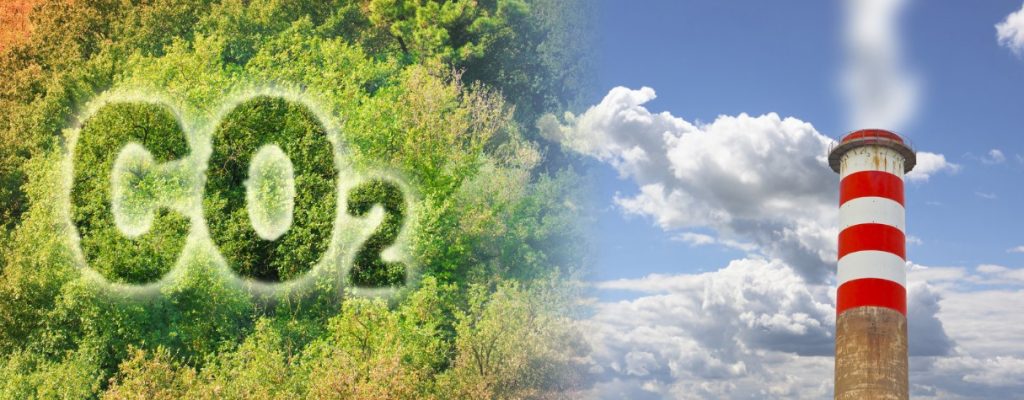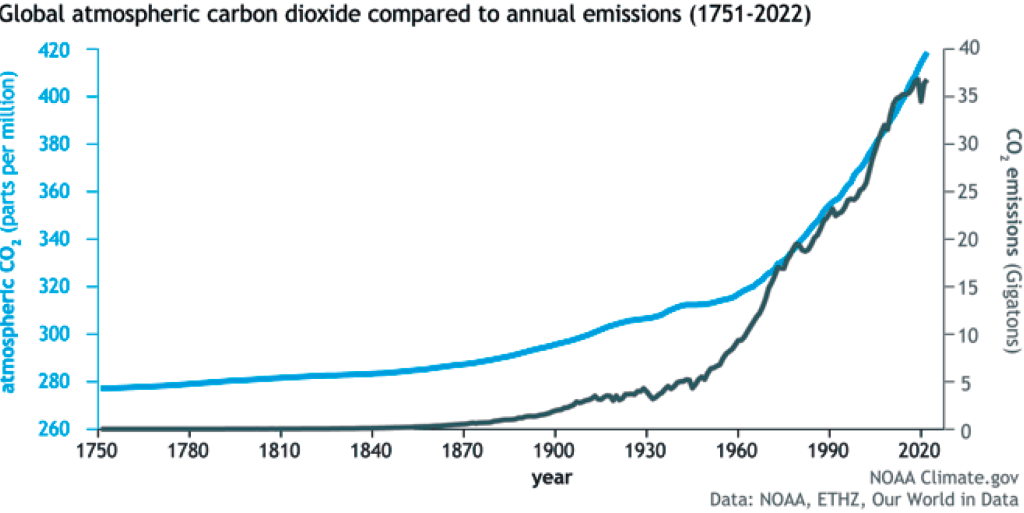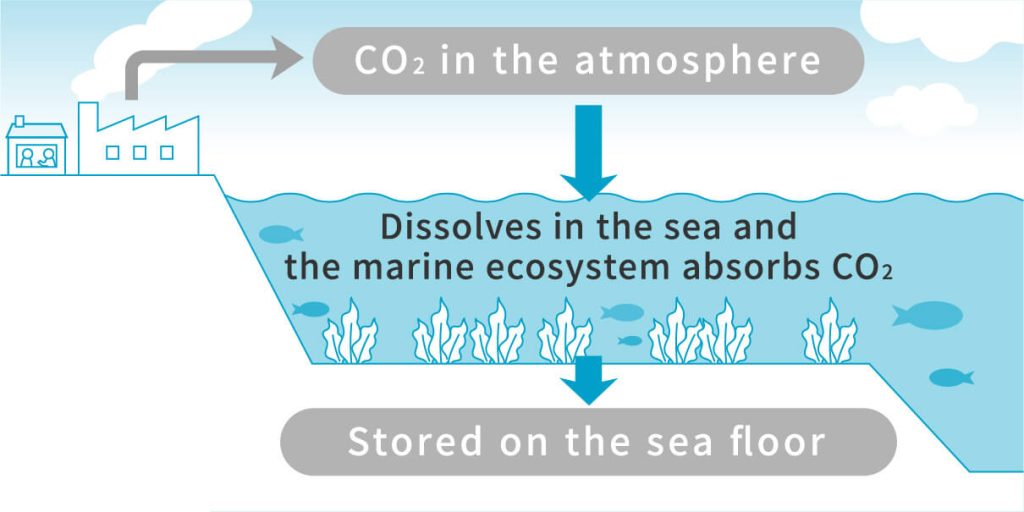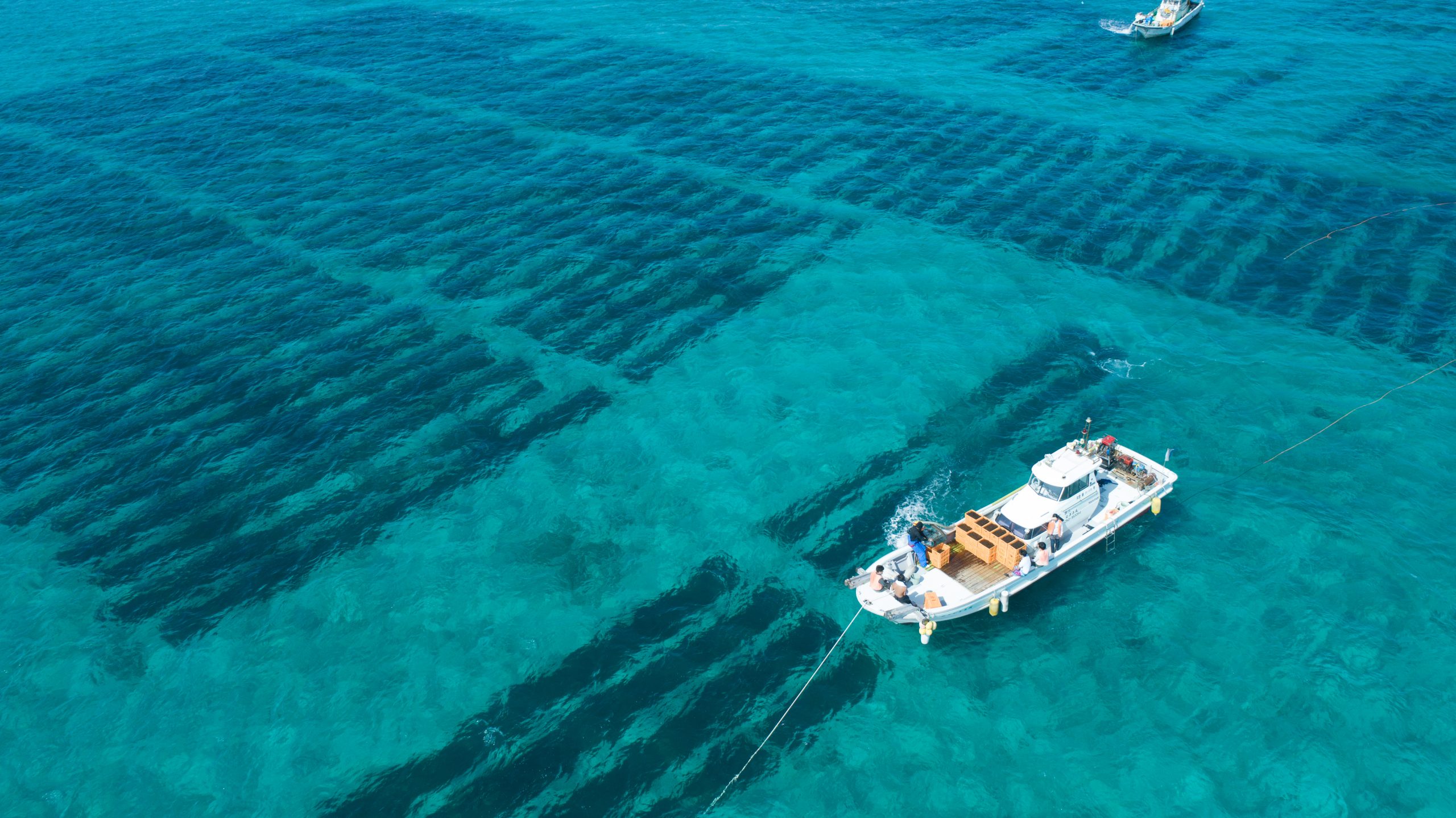Discover the Dual Benefits of Seaweed: Boosting Health and Fighting Global Warming


Umi No Shizuku is on the front lines of health supplements, famous for its top-notch fucoidan products. Today, we are thrilled to unveil the remarkable environmental benefits of seaweeds. These ocean plants are not just good for your health, they are superheroes for the planet, soaking up carbon dioxide and giving Earth a much-needed breath of fresh air. We all know trees are the big shots in grabbing CO₂ and releasing oxygen, but guess what? The ocean is a hidden champ in this game, too. From tiny phytoplankton to the big whales, they are all part of this massive carbon-storing team. Deep down in the ocean carbon finds a resting place, making it the biggest carbon closet on the planet. It gobbles up about 25-30% of the CO₂ we humans send out into the world every year. This superhero move is called “blue carbon”, and it is a big deal for planet’s health.
Current Global Issues
First off, the huge amounts of carbon dioxide humans have been emitting have kicked off the “greenhouse effect” and “global warming.”
This chart throws the spotlight on how much carbon dioxide (CO₂) is hanging out in the atmosphere (the blue line), tracking all the way back to the 1750s Industrial Revolution. Ever since then, it has been on the rise, shadowing the gray line that shows just how much CO₂ we are pumping out.
The amount of CO₂ we are releasing into the atmosphere is slowly climbing, now sitting at about 35 gigatons a year. If we keep up this pace, millions of people around the globe could find themselves without a home due to rising sea levels caused by global warming. Plus, even more people will face the wrath of extreme weather, reduced crop yields, and other challenges that hit hard.
Battling GLOBAL WARMING
CO₂ level might just be the key.
With 70% of Earth covered by oceans, imagine this: if just 9% of our oceans were turned into seaweed farms, we could slash carbon emissions by 5 billion tons, beating current CO₂ levels. Studies show that oceans and the seaweed flourishing in them can soak up 2.4 times* more CO₂ than forests.
*Journal of the JIME Vol. 52, No. 6(2017)
And here’s a fun fact: seaweed grows super fast, which is great for gobbling up CO₂. Giant kelp, for example, can shoot up nearly a meter every single day—a feat land plants can only dream of.
*In California, giant kelp grows up to 50 cm daily.

How do oceans soak up CO₂?
Well, they have a couple of cool tricks up their sleeve: the physical pump and the biological pump.
(1) Physical pump: CO₂ loves water, which means it easily dissolves into the ocean from the atmosphere. Since the solubility of CO₂ in seawater and the water’s density are both inversely related to temperature, colder waters in high-latitude areas can dissolve more CO₂ and are denser. These CO₂-rich, dense cold waters gradually sink to the deep ocean. Thanks to the massive conveyor belt of ocean circulation, CO₂ absorbed at the surface gets transported and stored deep down across the globe.
(2) Biological pump: This is all about the ocean’s tiny plants, phytoplankton, doing their photosynthesis thing in the sunlit upper layers, turning dissolved CO₂ into solid organic carbon. While most of this organic carbon gets recycled back in the upper ocean, a small part sinks to the deep ocean before it decomposes, or it even gets buried in the sediment forever.

Let’s delve into how seaweeds absorb and store CO₂:
The ocean’s “blue carbon” squad includes seagrasses, saltmarsh plants, mangroves, and algae. Plants come in two types here: those with roots and those without. Both types can suck up CO₂ through photosynthesis. Mangroves and seagrasses have roots, storing carbon in the sediments. Seaweeds growing on rocks like kelp and wakame use their roots just to hold on. Once ripped off, these seaweeds can float away under the ocean currents, turning into “floating seaweed”. These rootless seaweeds don’t die right away when torn off, they keep photosynthesizing and holding onto carbon inside. Then they get carried to deeper waters, and even as they decompose, they hang out in the deep sea for a long time, keeping carbon locked away as blue carbon. Furthermore, they are also pulling in CO₂ from the water around them, thanks to CO₂’s love for dissolving in water. That’s the magic of blue carbon stored at the bottom of the deep blue.

Promoting the Development and Utilization of Seaweed Farming
Due to coastal development, rising sea temperatures, a decrease in seaweed consumption, and an aging population of seaweed fishermen, seaweed populations have been dwindling. This is the reason why we are advocate consuming more seaweed, not only to enjoy its health benefits but also to promote seaweed growth and help increase seaweed beds. Seaweed is a key part of Okinawa’s famous longevity diet, especially Mozuku, which is packed with essential proteins, fats, carbohydrates, vitamins, minerals, and notably, a generous amount of Fucoidan. This compound is great for keeping the locals healthy, but extracting just 10g of Fucoidan requires about 1kg of seaweed. So, making Fucoidan health products not only demands a lot of seaweed, boosting its production, but also supports everyone’s immune systems. Okinawa’s Mozuku makes up more than 90% of Japan’s market share, with April being the peak harvest season. That’s why the third Sunday of April is celebrated as “Mozuku Day”.
Over at our marine farm on Ishigaki Island in Okinawa, we grow our own Mozuku, a crucial ingredient in our Umi No Shizuku health products. The main role of the Umi No Shizuku team is to enlighten and introduce high-quality Fucoidan products to the world, but we consider it important for each staff member to have an awareness of sustainable management of the ocean and the environment through the seaweed and aquaculture system.
Reference: https://scitechvista.nat.gov.tw/Article/C000003/detail?ID=6fb5b1ef-3081-404e-81a5-8ad74a39d26f
‘Our Mission’
"Umi No Shizuku firmly believes that producing and using Fucoidan is not just a fantastic move but also a responsibility to spread the word about its benefits. We are on a mission to unlock the full potential of seaweeds, protect our oceans from harm, contribute to healthier and more comfortable lives for people, and together, forge a beautiful future for humans and the ocean. Let's dive into this journey with passion and purpose!"
Back to the list
